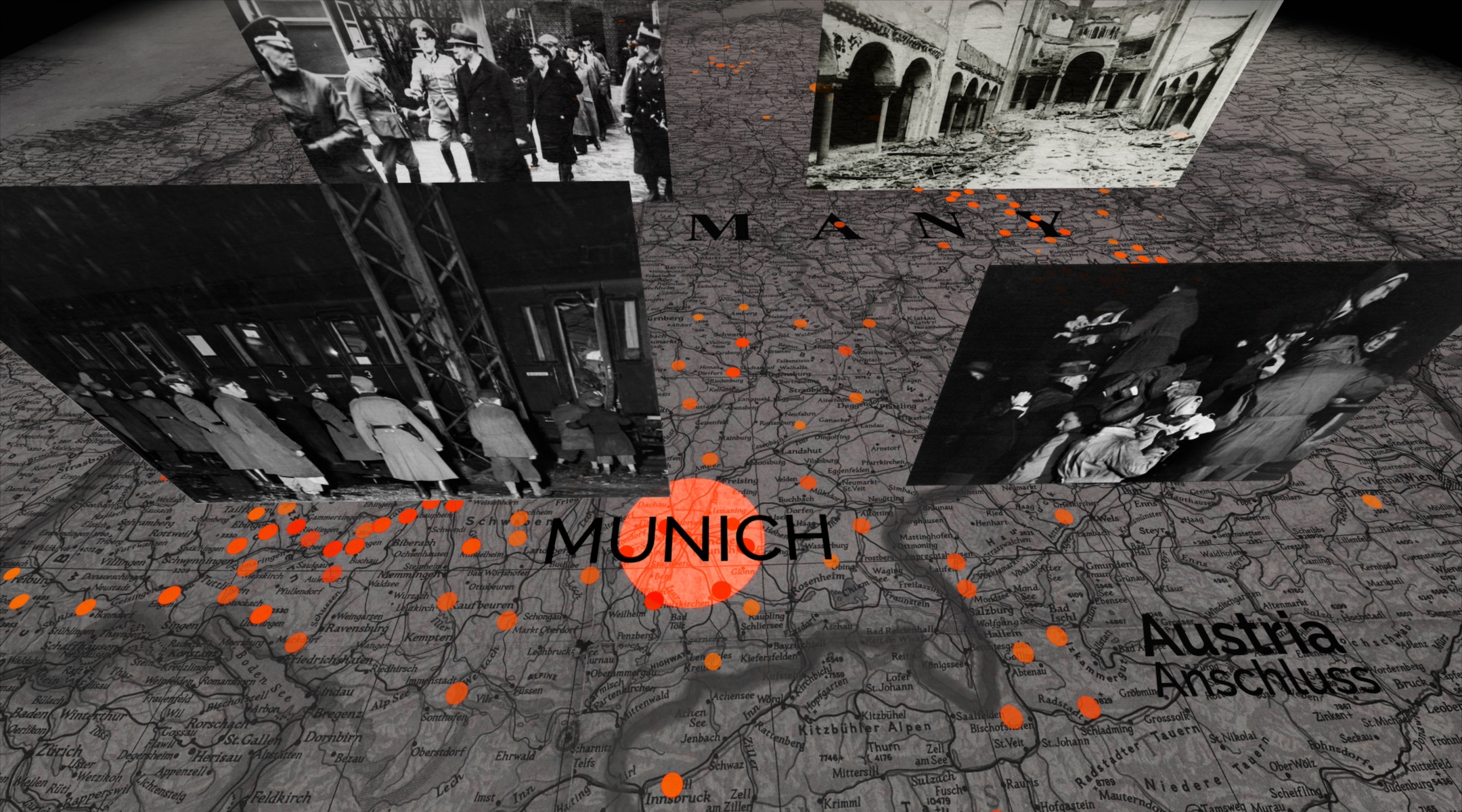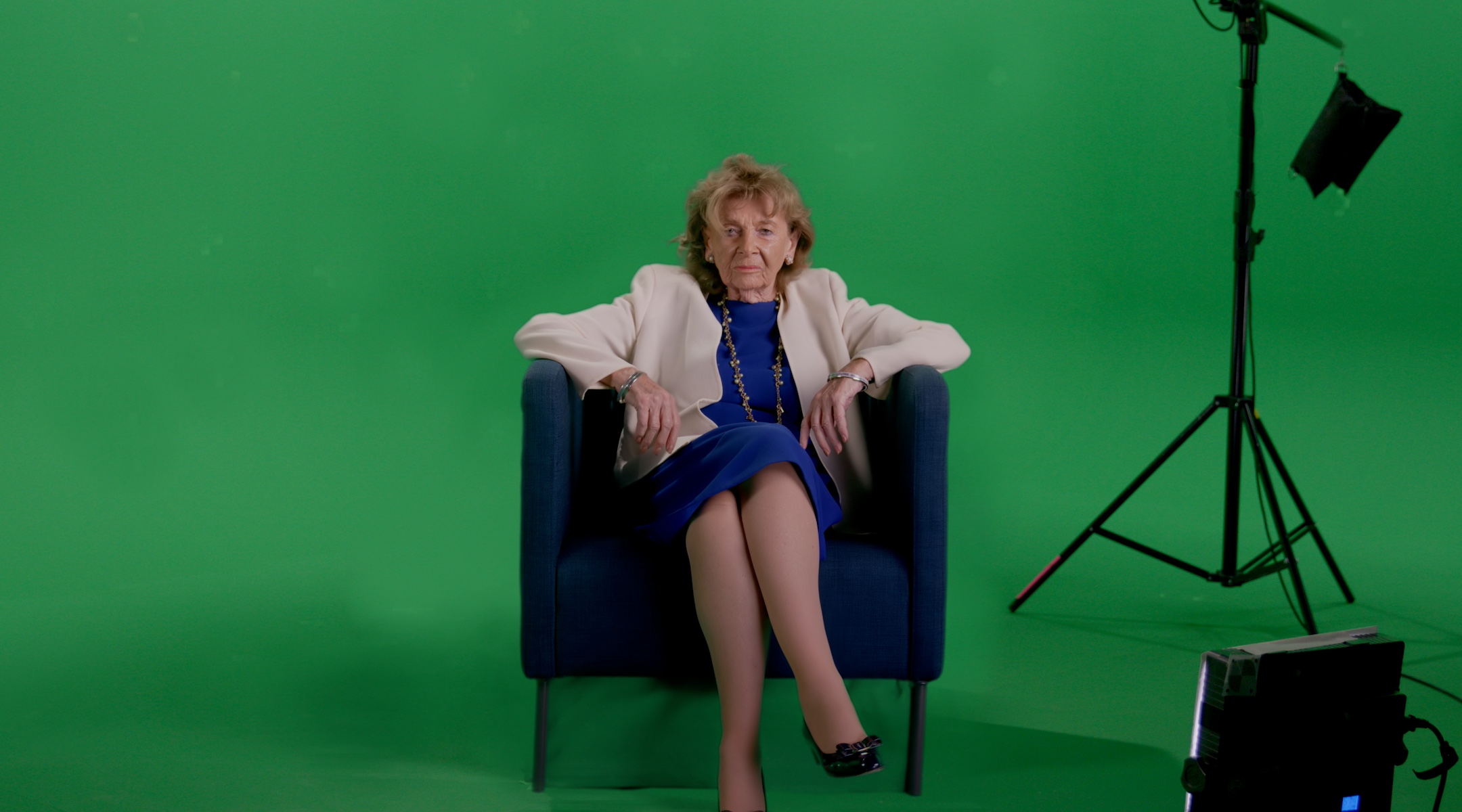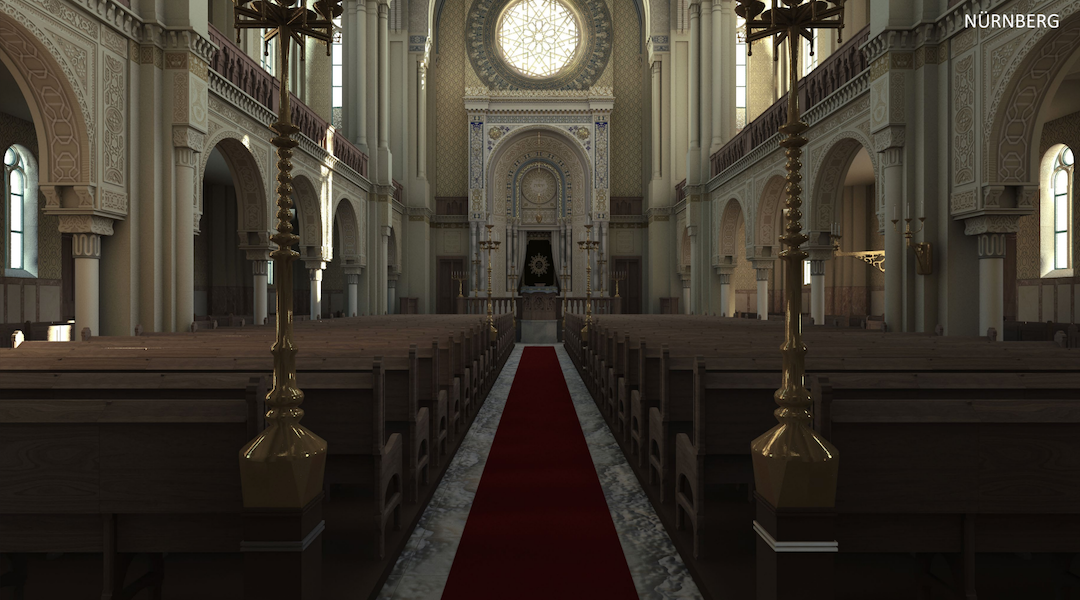From virtual reality to digital synagogues, tech adds new dimension to Kristallnacht commemorations in Germany
Some Jewish groups are tying their commemorations together with a statement on the current Gaza war — and some are using virtual reality technology to give their projects new dimensions

An image from the Holocaust history virtual reality experience being developed by the Conference of Jewish Claims Against Germany. (Claims Conference)
(JTA) — Nov. 9 marks several historical anniversaries in Germany, including Adolf Hitler’s failed putsch in 1923 and the 1989 fall of the Berlin Wall.
But the Kristallnacht pogrom of 1938 eclipses them all, in terms of public significance. In Germany today, those riots of 85 years past are seen as a warning of what may happen if antisemitic violence is given free reign.
This year, the anniversary takes on added significance: It falls shortly after Jews around the world marked “shloshim” – 30 days – since the Hamas massacre of 1,400 Israeli civilians and kidnapping of some 240.
Some Jewish groups are tying their commemorations together with a statement on the current Gaza war — and some are using virtual reality technology to give their projects new dimensions.
“Hatred left unchecked can easily slip into genocide,” said Greg Schneider, executive vice president of the Conference of Jewish Claims Against Germany. His group announced on Thursday the development of a new virtual reality “experience” that will tell the story of Kristallnacht — the night of Nov. 9-10, 1938, when Nazis destroyed or damaged about 300 synagogues and 7,500 Jewish-owned businesses and properties across Germany, Austria and in parts of former Czechoslovakia. Police arrested some 30,000 Jews and sent them to concentration camps; hundreds of Jews were killed.
The pogrom, seen in hindsight as a precursor to the Holocaust, carries “such an important message for today,” Schneider continued, noting reports of increased antisemitic incidents around the world. “The lesson from Kristallnacht is clear: If you don’t fight it, this is what can happen. And we cannot live with that.”
The virtual reality video – which the Claims Conference is producing with the USC Shoah Foundation, Meta, UNESCO and the World Jewish Congress (WJC) – will include an interactive walk with survivor Charlotte Knobloch through the streets of her home city of Munich, where as a six-year-old she witnessed the aftermath of Kristallnacht. She survived the war by hiding with a Christian family for years.
When the virtual tour is ready in a few months — via VR headset or internet browser — viewers will be able to ask questions and the virtual Knobloch will answer.
“We are hoping it draws in young people and those who find the technological side interesting,” Schneider said.

Holocaust survivor Charlotte Knobloch on a green screen set filming footage for a virtual reality project. (Claims Conference)
“It is important to me that we reach young people with this project” in perpetuity, said Knobloch, 91, in an email to the Jewish Telegraphic Agency. She wanted to help “ensure that memories are passed on, even if no one can remember themselves.”
Knobloch “spent the last 85 years processing what I experienced on November 9, 1938. I also tried to forget — but without success.” She has often shared her memory of walking with her father hand in hand past blackened synagogues, the shattered windowpanes of Jewish shops crunching beneath her feet.
“The streets in Munich are the same today as they were back then,” she wrote in her email. “The places are charged, and nothing will ever change that for me. But the trust that I was able to regain after 1945 means that while streets are the same, the people can change – at least some of them. After many decades, this worked for me. Today, however, this trust is waning.”
WJC President Ronald Lauder called Hamas’ attack “the most devastating since the Holocaust” in a statement announcing a joint Kristallnacht commemoration with the Central Council of Jews in Germany and the Israelite Religious Society Austria.
Their educational event will feature full-color digital reconstructions of destroyed synagogues in Germany and Austria, projected onto the walls of buildings where the synagogues once stood. In some locations, virtual reality goggles will enable a virtual tour. The digital reconstructions were developed together with the Technical University of Darmstadt and the University of Vienna.
In former East Berlin, the Central Council will commemorate Kristallnacht with Germany’s President Frank-Walter Steinmeier and Chancellor Olaf Scholz at the synagogue Kahal Adass Jisroel, which recently was the target of an attempted arson. The structure had been damaged in 1938; it was renovated more than a decade ago with the support of the Ronald S. Lauder Foundation, the Skoblo family in Berlin and the United Kingdom-based Maurice and Vivienne Wohl Philanthropic Foundation.
In Vienna, the Jewish Youth organization will hold a memorial march called “Light of Hope.” “The words ‘Never again’ hold a more pressing relevance than ever,” Oskar Deutsch, chair of the Israelite Cultural Community of Vienna, said in a statement ahead of the events.
The Israeli hostages in Gaza will be the focus of a Kristallnacht remembrance in Frankfurt, sponsored by the German-Israel Society (DIG). Titled “Never again is now,” the event also aims to “show the people of Israel that they are not alone.”
It also aims to support the Jews of Germany, said DIG President Volker Beck in an email. “After the Hamas massacre on October 7 and the tsunami of antisemitism that followed worldwide, you can’t help thinking: What, again?”
“Fear is rampant in the Jewish community,” added Beck, who is not Jewish. “We in Germany have to start from scratch to make our cities and villages safe for Jews.”

An image from one of the many synagogue recreations that will be projected onto buildings in Germany and Austria, Nov. 9, 2023. (WJC)
In Berlin, in the early morning hours on Friday, a German Protestant Christian group called Light and Salt will hold a vigil for Israel, under the slogan “you are my people.”
“We have unfortunately noticed once again – 85 years after Kristallnacht and since October 7th, 2023 – that antisemitism is more present than ever,” wrote the group on its Facebook announcement.
Joachim Bambach, a nurse by profession, started Light and Salt in 2017, after he heard people at a pro-Palestinian demonstration “shouting ‘Jews to the gas.’ This was horrific for me, absolutely horrific. I could not stand this, and I knew I had to do something about it,” he said in a telephone interview.
So he started organizing prayer vigils outside the German chancellery in Berlin.
The brutality of the Hamas attack should wake up the world, he told JTA. “For me, basically this is a battle of two world views,” he said, “a battle for the existence of the Jewish people in the land of Israel, and nothing else, and we have to face this, like it or not.”
Knobloch told JTA she feels safe in Germany and appreciates the support shown by the German government and general public. But she fears both are souring, as more Germans say “yes, but…” and as the government’s resolve weakens: In late October, Germany abstained rather than opposing (with the United States) a United Nations General Assembly resolution seeking an immediate “humanitarian truce” in Gaza.
More than anything, she worries mostly about Germany’s Jewish youth and about her own family.
“My granddaughter, who lives in Israel, was here for a while after the attack with her two eight-year-old sons because the children could no longer stand the bunkers,” Knobloch said. “Now she has gone back, because she said it was too unsafe here, too. It’s hard not to just give up. But I still hope that things will change for the better.”
This article originally appeared on JTA.org.
















